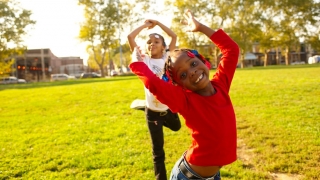Pediatric Versus Adult Stroke
Published on
Health Tip of the WeekPublished on
Health Tip of the Week When you think of a stroke patient, you probably picture a middle-age man or woman — someone who’s probably overweight, and has diabetes or high blood pressure.
When you think of a stroke patient, you probably picture a middle-age man or woman — someone who’s probably overweight, and has diabetes or high blood pressure.
You probably don’t think of an active 7-year-old child or a babbling 10-month-old baby. But kids — and babies — have strokes too.
Strokes occur when blood flow to part of the brain is interrupted or blocked by a blood clot or broken blood vessel. Every year in the United States, nearly 800,000 adults and 3,000 children younger than 18 years old have a stroke. And stroke is one of the top 10 causes of death in the U.S. — for adults and children.
“While the statistics can be alarming, it’s important to put pediatric stroke into perspective,” says Rebecca N. Ichord, MD, a pediatric neurologist and director of the Pediatric Stroke Program at The Children’s Hospital of Philadelphia. “Only two to three children out of 100,000 have strokes.”
According to the American Stroke Association, the percentage of children who experience stroke has remained unchanged for more than a decade. What has changed, though, is the number of children who survive and recover from pediatric stroke.
“We have gotten better at recognizing pediatric stroke – and treating it,” Dr. Ichord says.
You may know how to recognize that an adult is having a stroke, but the signs and symptoms can differ in children. So can the risk factors for pediatric stroke. To help better understand just how they’re different, Dr. Ichord offers the details about pediatric stroke.
While adults often experience one-sided facial droop, speech difficulties, and muscle weakness, common stroke symptoms in children include:
In newborns and infants, symptoms include seizures, extreme sleepiness, and a tendency to use only one side of the body. Some signs of newborn stroke may not be noticeable to parents until the baby is 4-6 months old.
Common stroke risk factors for adults — such as being overweight, having diabetes, high blood pressure, and hardening of the arteries — do not typically play a role in children, Dr. Ichord says. “Kids are not just little adults,” she adds. “They have strokes for different reasons.”
Children who have a stroke fall into two categories:
Determining what caused the stroke plays an essential part in determining how to treat it. Comprehensive testing, like that done at The Children’s Hospital of Philadelphia, helps identify hidden disorders — such as narrow blood vessels or a tendency to form blood clots — that affect previously healthy children.
Early recognition and treatment of stroke is critical to long-term outcomes for children and can minimize the chance of recurrence.
How you respond to a suspected stroke is the same for both adults and children. If you suspect a child is having a stroke, get help immediately. Don’t wait around to see if symptoms improve.
The good news is that about half of all children who have a stroke will recover completely. The other half, though, will retain some degree of impairment, which can range from mild to severe. Still, most children will recover the ability to walk and talk, and return to school.
Stroke researchers around the world continue to look for ways to improve stroke treatment and outcomes. Already, many facilities have adopted CHOP’s team approach and uniform protocols for pediatric stroke cases. And a new national collaborative between pediatric and adult stroke providers promises to offer even greater insight in the years ahead.
Categories: Pediatric Stroke